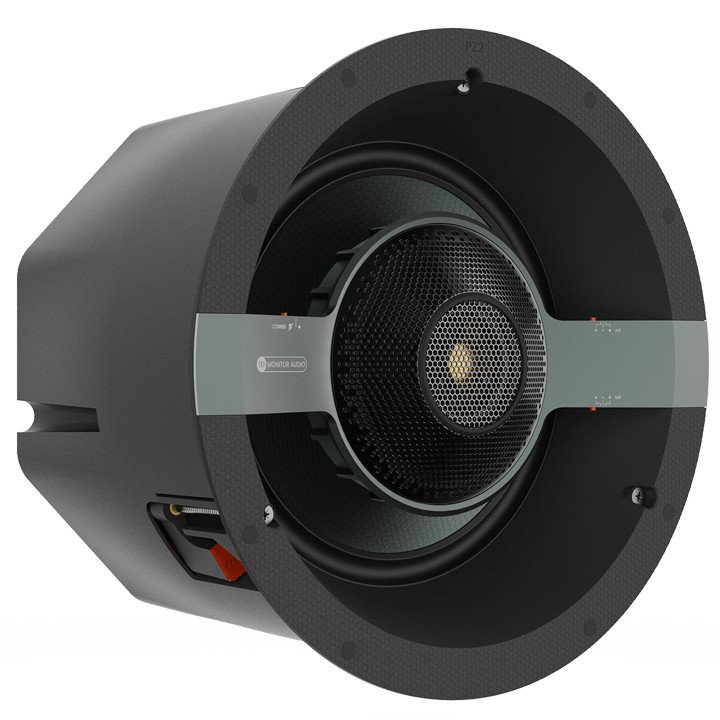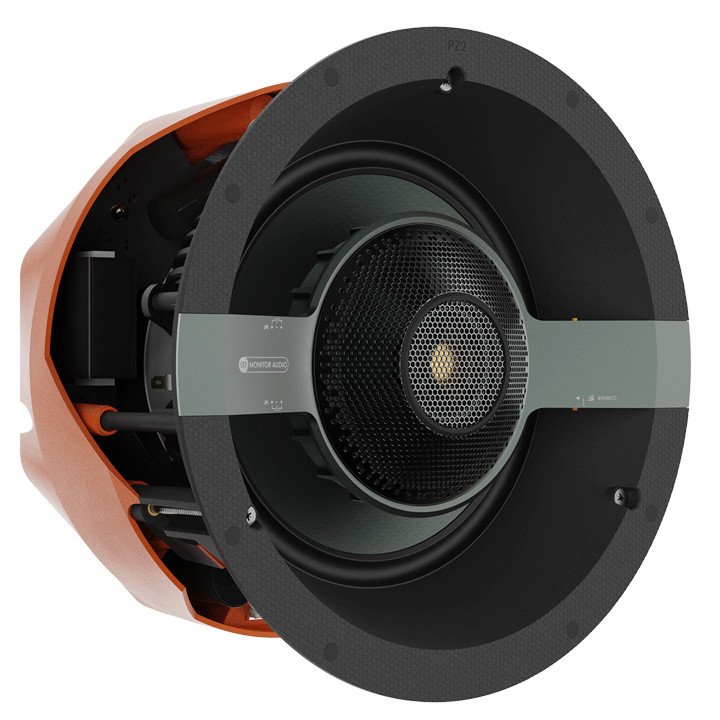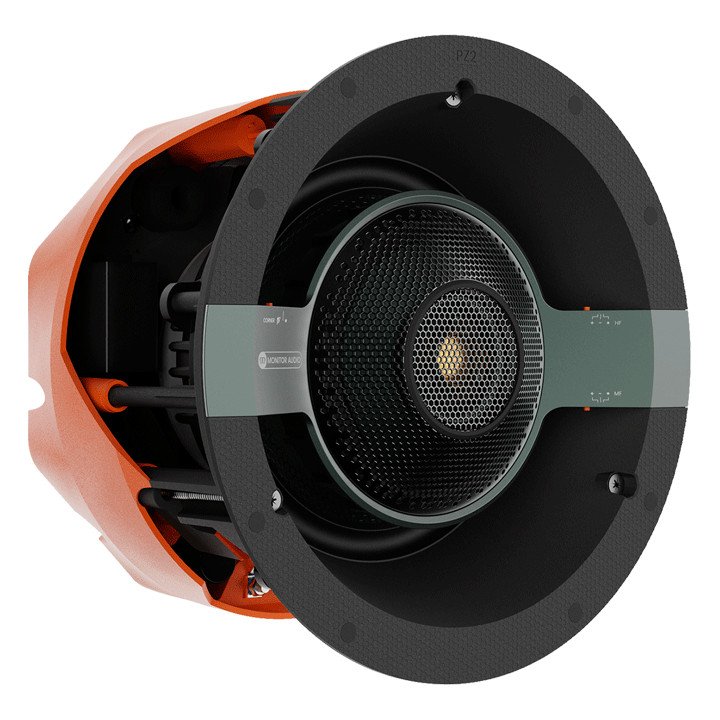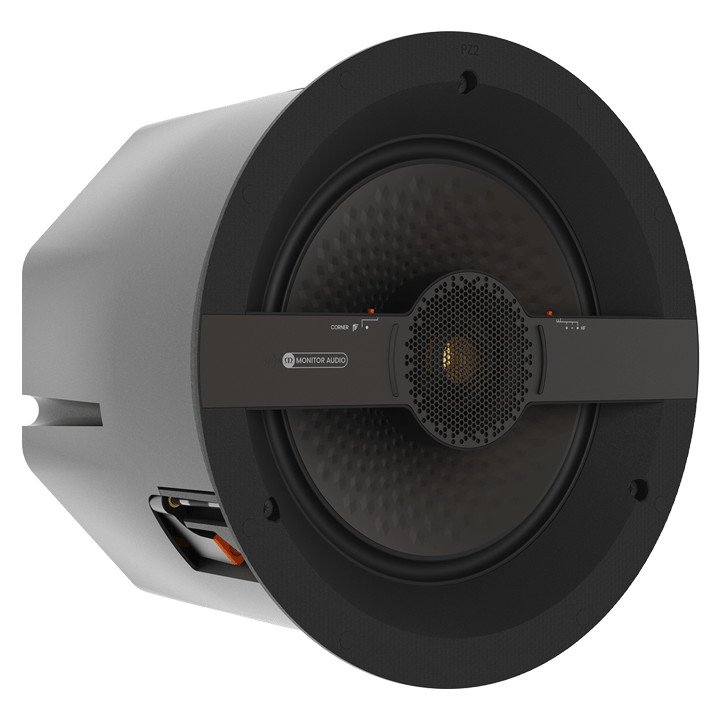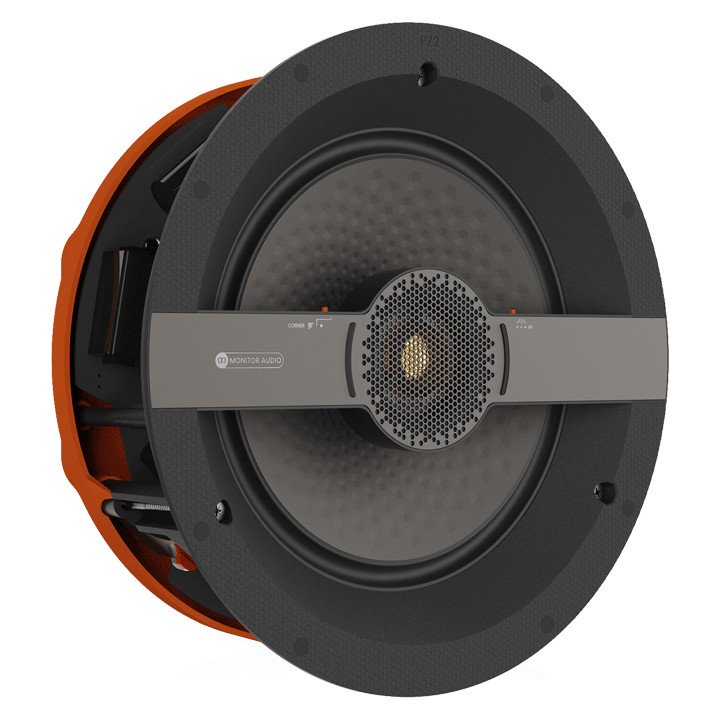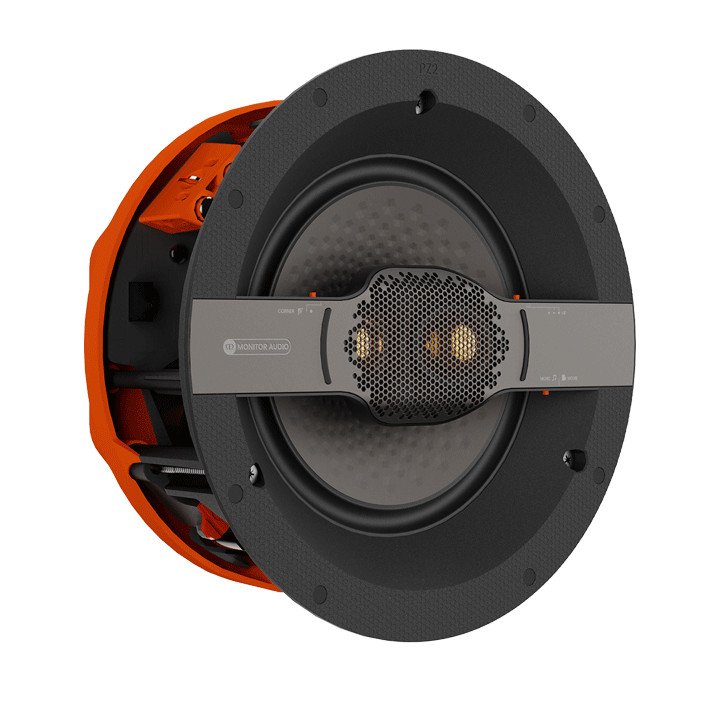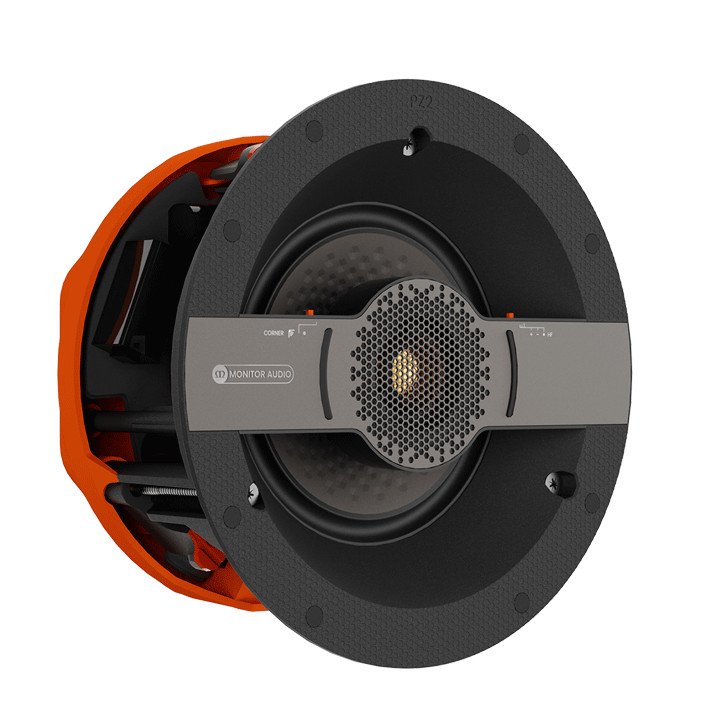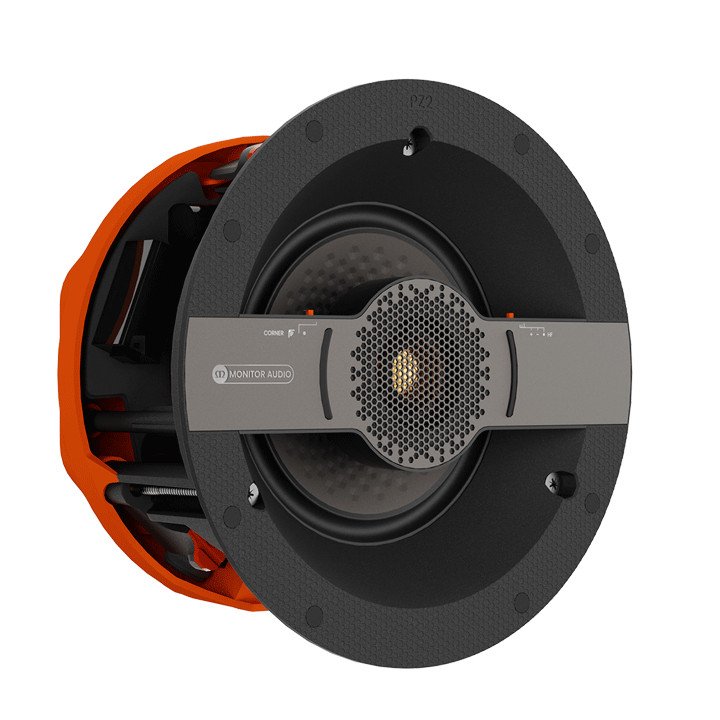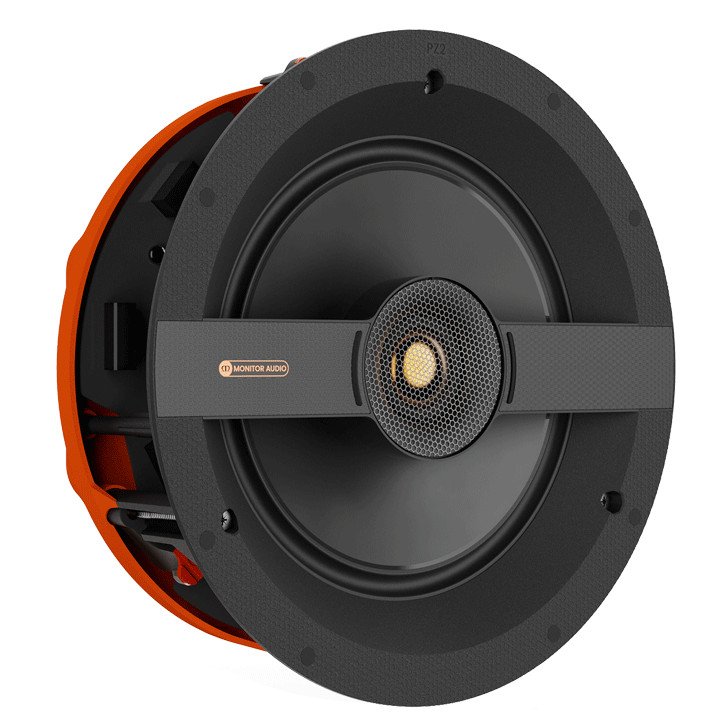In-Ceiling Speakers

Maximize Your Space: Why Ceiling Speakers are the Perfect Audio Solution
Looking to maximize your space and enhance your audio experience? Look no further than ceiling speakers. These innovative audio solutions offer a unique way to enjoy high-quality sound without cluttering your living space.
With ceiling speakers, you can seamlessly integrate audio into any room without the need for bulky speakers and wires. Whether you're looking to create an immersive home theater, set the mood with background music, or simply enjoy crystal-clear sound throughout your home, ceiling speakers provide a discreet and elegant solution.
Not only do ceiling speakers save space, but they also offer superior sound quality. By being strategically placed overhead, they can deliver immersive audio that fills the entire room. This creates a captivating listening experience no matter where you are in the space.
Additionally, ceiling speakers are versatile and can be easily customized to fit your specific needs. Choose from a variety of sizes, shapes, and functionalities to ensure that they seamlessly blend into your aesthetic while providing the perfect audio solution.
Say goodbye to unsightly speakers and tangled wires. Embrace the sleek and space-saving design of ceiling speakers and elevate your audio experience today.
Advantages of using ceiling speakers
Ceiling speakers offer a range of advantages that make them an ideal audio solution for any space. Firstly, they save valuable floor and wall space, allowing you to optimize your room layout. By being mounted overhead, ceiling speakers eliminate the need for bulky freestanding speakers that can take up valuable real estate in your living space. This is especially beneficial in smaller rooms or apartments where space is limited.
In addition to saving space, ceiling speakers provide superior sound quality. By being strategically placed overhead, they can deliver immersive audio that fills the entire room. This creates a captivating listening experience no matter where you are in the space. Unlike traditional speakers, which may have limited coverage and create audio dead zones, ceiling speakers provide an even distribution of sound throughout the room. This ensures that every corner of the space is filled with high-quality audio.
Furthermore, ceiling speakers offer a sleek and minimalist design that seamlessly blends into any aesthetic. Unlike traditional speakers that can be visually distracting and disrupt the overall ambiance of a room, ceiling speakers remain discreet and unobtrusive. They can be painted to match the color of the ceiling or hidden behind a grille for a seamless integration into the room's design. This allows you to enjoy exceptional audio without compromising the visual appeal of your living space.
In summary, the advantages of using ceiling speakers include saving space, superior sound quality, and a sleek and minimalist design that seamlessly integrates into any room.
Types of ceiling speakers
Ceiling speakers come in a variety of types, each designed to cater to different audio needs and room sizes. Understanding the different types of ceiling speakers available can help you make an informed decision when selecting the right ones for your space.
1. In-ceiling speakers: These are the most common type of ceiling speakers and are designed to be mounted directly into the ceiling. They typically come in round or square shapes and can be recessed to create a flush-mounted appearance. In-ceiling speakers are suitable for a wide range of applications, from background music in residential spaces to more immersive audio in home theaters.
2. In-wall speakers: While not technically ceiling speakers, in-wall speakers are worth mentioning as they offer a similar audio solution. These speakers are mounted flush against the wall and provide a discreet audio experience. In-wall speakers are often used in spaces where ceiling installation is not possible or preferred, such as rooms with high ceilings or architectural constraints. They are commonly used in commercial spaces, conference rooms, and larger home theaters.
3. Weatherproof speakers: If you're looking to extend your audio experience to outdoor spaces such as patios or gardens, weatherproof ceiling speakers are the way to go. These speakers are designed to withstand exposure to the elements, ensuring durability and longevity. They are typically built with corrosion-resistant materials and feature a weatherproof grille to protect the internal components from moisture and debris. Weatherproof ceiling speakers allow you to enjoy high-quality audio while enjoying the outdoors.
In summary, the types of ceiling speakers include in-ceiling speakers, in-wall speakers, and weatherproof speakers. Each type offers unique features and is suitable for different applications and environments.
Factors to consider before installing ceiling speakers
Before installing ceiling speakers, there are several factors you should consider to ensure the best audio experience and functionality in your space. These factors will help you make an informed decision and select the right ceiling speakers that meet your specific needs.
1. Room size: The size of your room plays a crucial role in determining the type and number of ceiling speakers you need. Larger rooms may require multiple speakers to achieve an even distribution of sound, while smaller rooms may only need one or two speakers. Consider the dimensions of the room and its acoustics to determine the optimal placement and configuration of the speakers.
2. Speaker power and sensitivity: The power and sensitivity of the speakers will determine the volume and clarity of the audio. Higher power speakers are ideal for larger rooms or spaces with high ceilings, as they can deliver a more robust sound. On the other hand, speakers with higher sensitivity are more efficient at converting power into sound and can provide better audio quality at lower volumes. Consider the power and sensitivity ratings of the speakers to ensure they are suitable for your specific space and audio requirements.
3. Speaker placement: Proper speaker placement is essential for achieving optimal audio performance. Consider the layout of the room, the location of furniture, and any architectural features that may affect sound distribution. Ideally, ceiling speakers should be placed symmetrically and evenly spaced to ensure a balanced audio experience. Take into account the listening areas and the desired coverage of sound when determining the placement of the speakers.
4. Audio source and connectivity: Consider the audio sources you plan to connect to the ceiling speakers. Whether it's a home theater system, multi-room audio setup, or wireless streaming device, ensure that the speakers are compatible with your desired audio sources. Some ceiling speakers come with built-in amplifiers and wireless connectivity options, allowing for easy integration with various audio systems.
By carefully considering these factors, you can ensure that the ceiling speakers you choose are well-suited to your space and audio preferences.
How to choose the right ceiling speakers for your space
Choosing the right ceiling speakers for your space involves considering a variety of factors, including sound quality, aesthetics, and budget. By keeping these considerations in mind, you can select ceiling speakers that meet your specific needs and provide an exceptional audio experience.
1. Sound quality: Sound quality should be a top priority when selecting ceiling speakers. Look for speakers that offer a wide frequency response range and low distortion levels. This ensures that the speakers can reproduce sound accurately and faithfully. Consider reading reviews and listening to audio demos to get an idea of the sound quality offered by different speakers.
2. Aesthetics: Since ceiling speakers are integrated into the room's design, it's important to choose speakers that complement your aesthetic preferences. Consider the shape, color, and finish of the speakers to ensure they blend seamlessly into your ceiling. Some manufacturers offer customizable options, allowing you to match the speakers to your room's decor.
3. Budget: Ceiling speakers come in a wide range of price points, so it's important to establish a budget before making a decision. Determine how much you are willing to spend and look for speakers that offer the best value for your money. While it's tempting to go for the cheapest option, remember that investing in higher-quality speakers can result in better sound performance and longevity.
4. Brand reputation: Consider the reputation and track record of the speaker manufacturer. Look for brands that are known for their quality and reliability. Established brands often have a wider range of options and offer better customer support and warranty services.
By considering these factors and doing thorough research, you can confidently choose the right ceiling speakers that will enhance your audio experience and seamlessly integrate into your space.
Installation process for ceiling speakers
Installing ceiling speakers may seem like a daunting task, but with the right tools and guidance, it can be a straightforward process. Here is a step-by-step guide to help you through the installation process:
1. Plan the layout: Before starting the installation, carefully plan the layout of the speakers. Consider the optimal placement for the speakers based on the room size and desired audio coverage. Mark the locations on the ceiling where the speakers will be installed.
2. Prepare the tools: Gather the necessary tools and equipment for the installation. This may include a stud finder, drill, hole saw, wire cutters, and a screwdriver. Ensure that you have the appropriate wire for connecting the speakers to your audio system.
3. Locate ceiling joists: Use a stud finder to locate the ceiling joists. This will help you determine the best locations for installing the speakers and ensure that they are securely mounted.
4. Cut the speaker holes: Use a hole saw of the appropriate size to cut the holes for the speakers. Follow the manufacturer's guidelines for the recommended hole size. Be careful not to damage any electrical or plumbing lines in the ceiling.
5. Run speaker wires: Run the speaker wires from your audio source to the locations where the speakers will be installed. Use wire clips or staples to secure the wires along the ceiling or through the walls. Ensure that the wires are properly labeled for each speaker location.
6. Mount the speakers: Carefully mount the speakers into the prepared holes. Follow the manufacturer's instructions for securing the speakers in place. Ensure that the speakers are flush with the ceiling and securely fastened.
7. Connect the wires: Strip the ends of the speaker wires and connect them to the corresponding terminals on the speakers. Ensure a secure and tight connection to prevent any audio loss or interference.
8. Test the speakers: Once all the speakers are installed and wired, test the audio to ensure that each speaker is functioning properly. Adjust the volume and balance settings as needed to achieve the desired audio experience.
By following these steps and taking your time during the installation process, you can successfully install ceiling speakers and enjoy high-quality audio in your space.
Tips for optimizing the sound quality of ceiling speakers
To ensure the best sound quality from your ceiling speakers, consider implementing the following tips:
1. Speaker positioning: Proper speaker positioning is crucial for optimizing sound quality. Experiment with different speaker placements to find the optimal configuration for your space. Consider factors such as room dimensions, listening areas, and acoustics when determining the placement of the speakers.
2. Room acoustics: The acoustics of the room can significantly impact the sound quality. Consider adding acoustic treatments such as curtains, rugs, and wall panels to reduce echo and improve sound absorption. This can help create a more balanced and immersive audio experience.
3. Speaker calibration: Many modern audio systems come with built-in calibration features that automatically adjust the sound settings based on the room's acoustics. Take advantage of these calibration tools to optimize the sound quality of your ceiling speakers. Follow the manufacturer's instructions for the calibration process.
4. Use high-quality audio sources: The quality of the audio source can greatly affect the overall sound quality. Whenever possible, use high-quality audio sources such as lossless audio files or CDs. Avoid low-quality streaming services or compressed audio formats, as they can result in reduced sound fidelity.
5. Consider additional audio equipment: Depending on your audio preferences, you may consider adding additional equipment such as a subwoofer or an audio receiver to enhance the sound quality of your ceiling speakers. These additional components can provide deeper bass and improved audio control.
By implementing these tips, you can optimize the sound quality of your ceiling speakers and enjoy a truly immersive audio experience in your space.
Maintenance and care for ceiling speakers
Proper maintenance and care are essential for ensuring the longevity and performance of your ceiling speakers. Here are some tips to keep your speakers in optimal condition:
1. Regular cleaning: Dust and debris can accumulate on the speaker grilles over time, affecting the sound quality. Regularly clean the grilles using a soft brush or a vacuum cleaner with a brush attachment. Avoid using harsh cleaning solutions or abrasive materials that can damage the speakers.
2. Check and secure connections: Periodically check the speaker wire connections to ensure they are secure and free from any corrosion or damage. Loose connections can result in audio loss or interference. If necessary, re-terminate or replace the speaker wires.
3. Protect from moisture: If you have weatherproof ceiling speakers installed in outdoor spaces, ensure that they are properly protected from moisture. Check the weatherproof grilles regularly for any signs of damage or wear. Consider covering the speakers during harsh weather conditions or when not in use.
4. Avoid excessive heat: Excessive heat can damage the internal components of the speakers. Avoid installing the speakers near heat sources such as fireplaces or vents. Ensure that the room temperature remains within the recommended range for the speakers.
5. Follow manufacturer's guidelines: Always refer to the manufacturer's guidelines and instructions for specific maintenance and care recommendations. Different speakers may have unique requirements, so it's important to follow the manufacturer's recommendations to ensure proper care.
By following these maintenance tips and ensuring proper care, you can extend the lifespan of your ceiling speakers and maintain their optimal performance.
Common misconceptions about ceiling speakers
Despite their many advantages, ceiling speakers are sometimes subject to misconceptions. Let's debunk some common misconceptions surrounding ceiling speakers:
1. Poor sound quality: Some people believe that ceiling speakers cannot deliver the same sound quality as traditional floor-standing or bookshelf speakers. However, this is not true. High-quality ceiling speakers, when properly installed and configured, can provide exceptional sound quality with a wide frequency response range and accurate audio reproduction.
2. Limited bass response: Another misconception is that ceiling speakers lack sufficient bass response. While it's true that ceiling speakers may not produce the same level of bass as dedicated subwoofers, many models are designed to provide a balanced audio experience with adequate bass. Additionally, you can always complement your ceiling speakers with a separate subwoofer for enhanced bass performance.
3. Difficult installation: Installing ceiling speakers is often perceived as a complicated and challenging task. While professional installation may be necessary for complex setups or large-scale projects, many ceiling speakers are designed for easy DIY installation. With the right tools and guidance, installing ceiling speakers can be a straightforward process.
4. Limited customization options: Some people believe that ceiling speakers offer limited customization options in terms of aesthetics and functionality. However, ceiling speakers come in a variety of sizes, shapes, and finishes, allowing for customization to match your room's decor. Additionally, many models offer adjustable tweeters and sound direction control, providing flexibility in sound distribution.
By understanding the capabilities and features of ceiling speakers, you can dispel these misconceptions and make an informed decision when considering them for your audio setup.
Conclusion: The versatility and benefits of ceiling speakers
Ceiling speakers offer a versatile and elegant audio solution that maximizes your space while delivering exceptional sound quality. With their discreet design and seamless integration into any room, ceiling speakers provide a clutter-free audio experience that enhances your living space.
The advantages of using ceiling speakers, such as saving space and superior sound quality, make them an ideal choice for various applications


